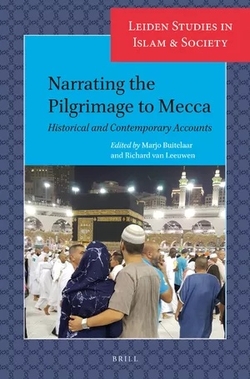 "It was magical; more magical than Disneyland!!" Thus does a British Muslim recall her 'umra, while Moroccans recall their pilgrimage experience as "beyond words," requiring that one "personally experience the journey to understand it." In contrast, a nineteenth-century Indian pilgrim found Mecca to have "a dreary, repulsive aspect" and "the majority of the people are miserly, violent-tempered, hardhearted and covetous," while a Soviet-era pilgrim in Mecca felt himself thrown into the "hellish sufferings of the middle ages."
"It was magical; more magical than Disneyland!!" Thus does a British Muslim recall her 'umra, while Moroccans recall their pilgrimage experience as "beyond words," requiring that one "personally experience the journey to understand it." In contrast, a nineteenth-century Indian pilgrim found Mecca to have "a dreary, repulsive aspect" and "the majority of the people are miserly, violent-tempered, hardhearted and covetous," while a Soviet-era pilgrim in Mecca felt himself thrown into the "hellish sufferings of the middle ages."
Between those extremes lie many, many reactions by Muslim visitors to the Masjid al-Haram and related sites in and around Mecca. Buitelaar and van Leeuwen, of the University of Groningen and the University of Amsterdam, respectively, have collected nine of what they call historical accounts of pilgrimage (the most recent dating from 1965) and seven contemporary accounts.
The former chapters analyze historical texts, while the latter bring the tools of social science to oral accounts gathered via ethnographic fieldwork and interviews with pilgrims. The two sections contrast in many ways: the number of pilgrims has multiplied many times, thanks to increased wealth and improved methods of travel. The gender balance has gone from being overwhelmingly male to rough parity. The age distribution has gone from elderly to young. The lingua franca has gone from Arabic to English. Mecca's role as commercial emporium has declined with the growth of global trade.
The lead editor explains that this book "sketches a detailed and diverse picture of how, in their stories, pilgrims draw on multiple cultural discourses and practices that shape their daily lifeworlds." As this sociologese suggests, the volume contains too much dense prose; happily, the livelier descriptions of hajjis and mu'tamirs redeem the text, making it of great interest to anyone seeking to understand this central and antique rite of Islam.